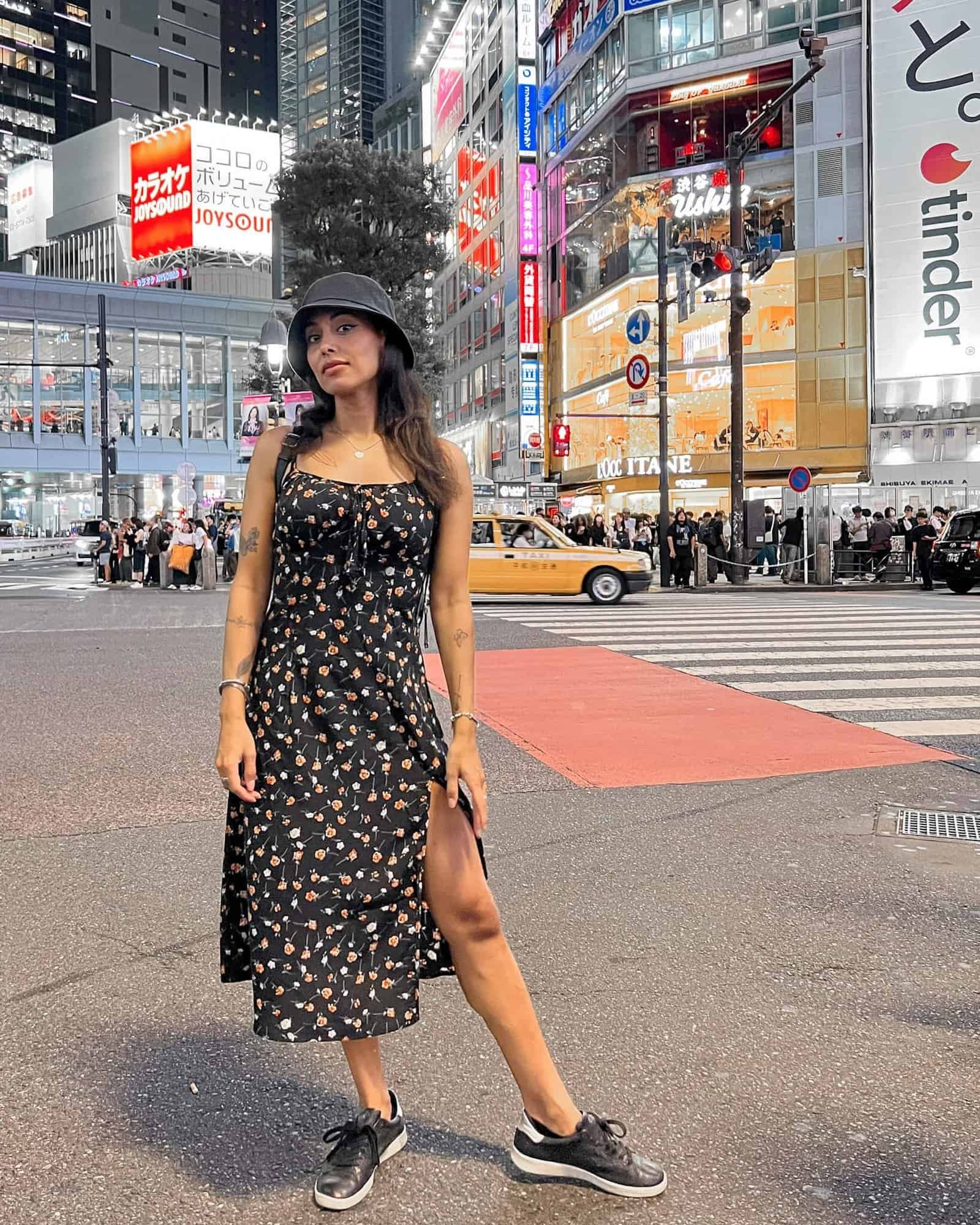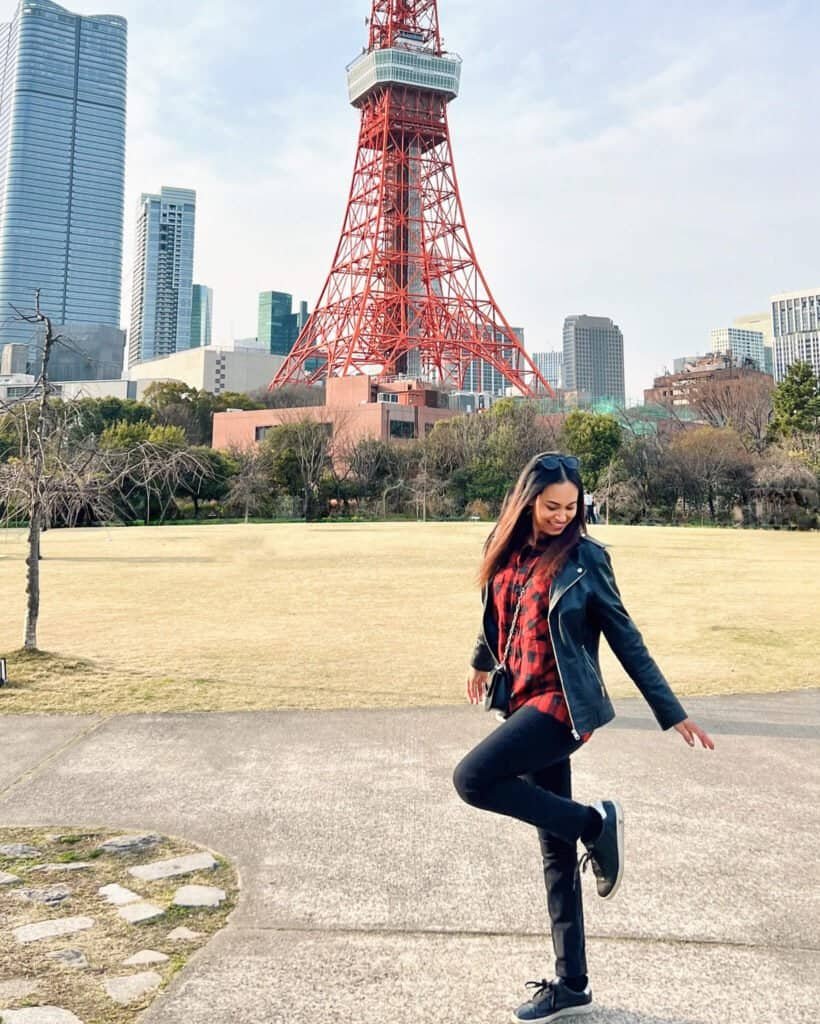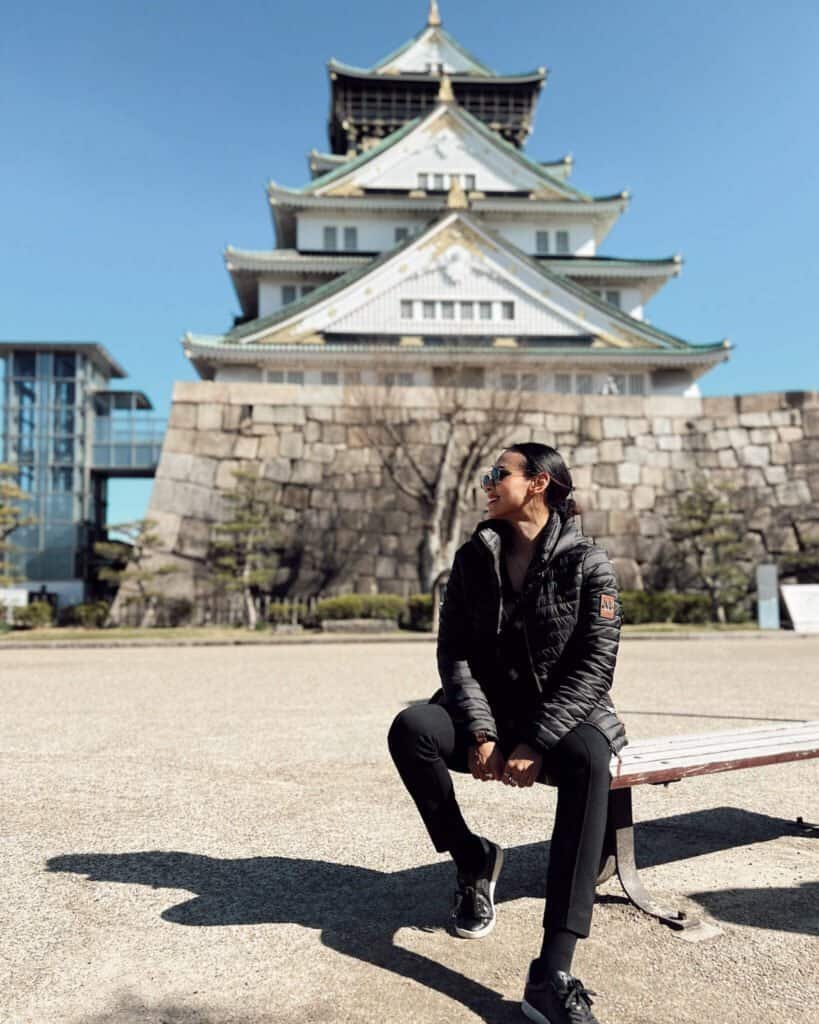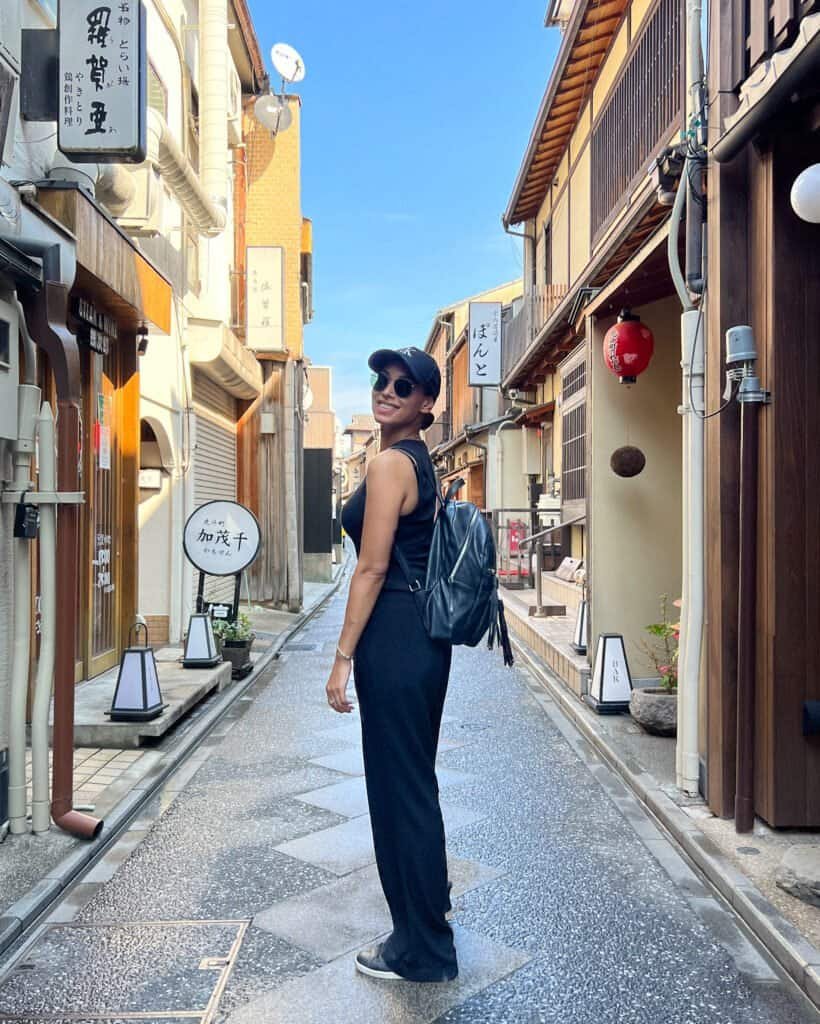14 Surprising Things to Know Before Travelling To Japan: Respect The Culture

This post may contain affiliate links. That means if you click and make a purchase, I may earn a small commission at no extra cost to you. I appreciate your support!💙
Here are things to know before travelling to Japan, so you can travel the country like a local! I have completely fallen in love with Japan and have visited twice in 2024, both solo and with my younger sister.
While every country has its customs, Japan truly has different local customs and etiquette. Being a good traveller also means reading up on how to respect local culture. We do not want to be that rude and annoying tourist we sometimes see on social media, right?
You might wonder why there are no trash cans on the streets of Japan or why that person is looking at you funny while you walk the streets of Tokyo drinking your iced latte.
This post will explain all the little cultural differences to make your trip as smooth as possible.
Don’t forget to check out my 2-week travel itinerary to Japan or my 5-day itinerary to Tokyo!
- ⛑️ Do NOT travel without travel insurance: Check out Safety Wing for reliable travel insurance.
- 🏨 Book your accommodations on Booking.com.
- ✈️ Book your ticket to Seoul with Skyscanner.
- 🎰 Find the best with the flexible Get Your Guide.
- 🚝 Check out the JR Rail Pass on Klook.
- 📞 Check out Airalo for great ESIM bundles.
- The Ultimate 2-Day Highlights Itinerary To Kyoto
- Don’t Miss These Fantastic Boutique Hotels in Kyoto
- The Perfect 5-day Itinerary to Tokyo: The Highlights
- The Best Top-Rated Food Tours in Osaka: Taste Japanese Cuisine
- Discover The Best Tours To Mount Fuji In Japan
- 10 Expert Reasons Why Japan is Fantastic for Solo Female Travel
- How To Use Public Transport In Japan: Do Not Get Lost
- The Ultimate Solo Female Travel Guide To Kyoto
1. Bring a plastic trash bag
Japan has no trash cans on the streets! Compared to most countries, where there are trash cans on every corner, I found that super weird, and I still do.
Years ago, there was an incident with a bomb being hidden in a trash can, and since then, the Japanese government has removed all public trash cans from the streets. I only saw a public trash can at the larger train stations.
To save yourself some trouble, bring a plastic bag (save one of those plastic bags you get at 7-Eleven) for your trash. Keep that with you until you see a public trash can or dispose of it in your hotel.
2. No drinking or eating while walking
I don’t know where this custom originated, but it’s one of the first things I learned when travelling to Japan. The funny thing is, you’ll see a lot of vending machines on the streets in Japan.
But the proper thing to do is get your convenience store sandwich and vending machine iced coffee, and stand still on the side of the street while eating or drinking. I’ve noticed the locals doing this; the only people who don’t are the clueless foreigners.
3. Queue up everywhere!
One of the things I love about Japan is the structured society. Compared to the rudeness and chaos in other Western countries like my own, it’s a good experience.
There are no cutting lines, people are mindful of others, people speak to each other respectfully, and being courteous is the standard.
It doesn’t matter where you go, whether it’s a restaurant, getting on the train or bus or wherever you need to wait a moment, you’re going to line up.
Even getting on a crowded subway means getting in line. I love it.
4. Be prepared to wait when eating out
Most restaurants don’t take reservations. You just show up and join the queue. Restaurants are used to it and have a great system for their customers. Usually, you leave your name and just wait outside.
Japan’s popularity has increased immensely in the last few years. Waiting in line for restaurants is a common practice. It’s even normal to wait in line before opening just to get in there on time.
5. Do not open or close taxi doors
I was lucky to read this somewhere before I came to Japan! Most taxis in Japan have automatic doors, so that’s one reason.
But even in Kyoto, I took an Uber, and the Uber driver got up to open and close the door for me. It’s so polite. I guess this is one of the ways courtesy is shown in Japan.
I had the most friendly Uber driver in Kyoto. While he didn’t speak English, he used a translation app to communicate with me, trying to make small talk. It was the cutest thing ever.


6. Pay attention to the dress code
While I do believe you should wear what you want and feel comfortable in, I also believe in respecting local customs. What you might wear at home might not be the best choice in other countries.
If you’re like me, you want to avoid unwanted attention, and how you dress is one way to do so.
Japan, and especially Tokyo, is more liberal than the smaller, lesser-known towns and cities in Japan. While some fashion might be awesome or extravagant, I didn’t see a lot of cleavage, for example.
I was also told that not wearing a bra is not done in Japan or wearing super tight, up your crack, leggings for that matter too (those should be illegal everywhere, in my opinion).
Dress based on what feels good to you while respecting local customs.
7. Etiquette when visiting shrines or temples
Every country has religious etiquette that we must follow when visiting. Locals still use most religious sites for prayers, so please pay attention to that.
One of the first things I learned is not to enter a torii gate in the centre but to walk a little to the left or right of the centre path.
And if you want to learn how to do a prayer, do this:
- Bow deeply twice
- Clap your hands twice
- Join your palms when offering your prayers
- Lastly, bow once.
You can find a lot of information on how to visit Japanese Shinto Shrines and more about Japanese Manners and Etiquette
8. Wear your walking shoes
Japan is a country where you’re going to be walking a lot, like 20k steps a day. Even if you’re taking public transport, there’s still a lot of walking when exploring neighbourhoods.
Kyoto, for example, has less public transport than Tokyo, and sometimes, it’s easier to walk than take the subway for just one stop. Time-wise, walking rather than taking the subway would be the same.
Most iconic sights in Kyoto are also not near public transport, so you’ll still have to walk at least ten minutes to reach your point of interest.
If you love walking, Japan is going to be great!
9. There are so many tourists
I’ve said before that Japan has seen an immense influx of tourists in the last few years. I also believe that the low YEN (which means more YEN for your bucks) has contributed to that.
Japan always had that image of being super expensive, especially Tokyo! But in reality, it’s all very affordable.
But, yes, Tokyo, Osaka, and Kyoto can get incredibly crowded, which can detract from the experience. The only thing you can do about it is to avoid travelling to Japan during the high season.
Skip June (rainy season), July and August (too hot), cherry blossom season, or fall foliage season. Winter can be good, but expect it to be very cold and snowy, which can add to the charm.
I think the best time to visit Japan is at the end of September and in May. These months are between the popular months, so it will be less crowded and have good weather.
10. No tipping in Japan
Tipping is not common and not necessary in Japan. However, I’ve seen some places that cater more to tourists and are on the hipper side that accept tips. Some places also ask for a cover charge or seating fee, which they only ask from tourists. That’s just a different way of asking for a tip or service charge.
11. Be careful of tourist scams
While Japan might look like a decent and honest country, which it is, nothing is perfect. While walking around Shinjuku, I heard a recording playing in English on the streets, warning tourists about establishments charging higher prices.
I paid attention to this, and it is true. Some places have higher prices on their English menus than local Japanese ones. I guess it’s common practice to try to scam tourists worldwide, including in Japan.
Don’t worry too much about it. I’ve only seen it happen in just a few places. The majority of places and restaurants don’t do this!
12. Etiquette on public transport
While it’s common in other countries to eat, drink or have loud telephone calls on public transport, this is not the standard in Japan.
Please don’t be that annoying tourist and respect the customs. Don’t cut the queue, don’t eat or drink and don’t take those obnoxious FaceTime calls in public.
I don’t understand how any of this became normal in a lot of countries, but I was happy to see that this doesn’t happen in Japan.
You can eat and drink on the longer train rides (like the bullet train) and yes, you can take a sip of water. Nobody is going to judge you for that!
13. Respect the bowing culture
In Japan, bowing is part of their culture and customs. Bowing is a fundamental aspect of Japanese culture, symbolising respect, gratitude, and humility. As a tourist, understanding the nuances of bowing can help you make a great impression and show appreciation for local customs.
Generally, the deeper the bow, the more respect it conveys—casual bows (15 degrees) are used for greetings, while deeper bows (30–45 degrees) express gratitude or apology.
When bowing, keep your back straight and hands at your sides (for men) or clasped in front (for women). While Japanese people don’t expect foreigners to master bowing, making an effort goes a long way in showing cultural sensitivity.
If you’re unsure, a simple head nod paired with a polite phrase like “arigato gozaimasu” (this means thank you) is always appreciated.
14. Learn a few phrases in Japanese
While this should be common practice for every traveller, I still feel that not everyone is making an effort to say a few words in the local language.
If you feel shy or awkward, just learn a simple hello and thank you. This will already get you very far, and locals always appreciate the gesture.
Let me help you on your way!
- hello = konnichiwa (use during the day)
- good morning = ohayou gozaimasu
- good evening = konbanwa
- excuse me = sumimasen
- thank you = arigato gozaimasu (polite form)
Plan your trip
With my online resources
Use my travel planning roadmap with all my digital resources to book every detail of your trip!
Japan is truly a great country to visit, with such an interesting culture and even better food! And just like every other country, there are things to know before travelling to Japan! I love the customs in Japan, and I love how organised the country and its people are.
Whether you’re travelling to Japan solo or with friends, it’s going to be epic anyway! This list of 11 things you need to know before travelling to Japan is going to help you!






